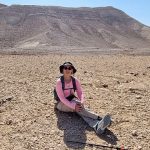Shaar Hagai to Nahal Kislon
with Al–Hashvil, guided by Avi Farjoun
Photo album: Israel Trail Hike 2024-10-31
As I hiked the Israel National Trail last week, ascending towards Jerusalem, I could see and feel the history of modern-day Israel and the country’s struggle for survival in every step. The trail bears witness to the Holocaust and the War of Independence. As our guide Avi spoke of Ben Gurion’s leadership and the military operations in 1948, the tales were hauntingly similar to current events in the region today.
Mahal monument
The hike started at the Mahal monument. Mahal is the acronym of Mitnadvei Hutz LaArtez, meaning “volunteers from abroad.” Some 4000 volunteers — mostly Jews, but also non-Jews — came from abroad to fight alongside the Israeli forces during the 1948 Independence War. The memorial includes a plaque listing the names of Mahal volunteers who fell during the war.
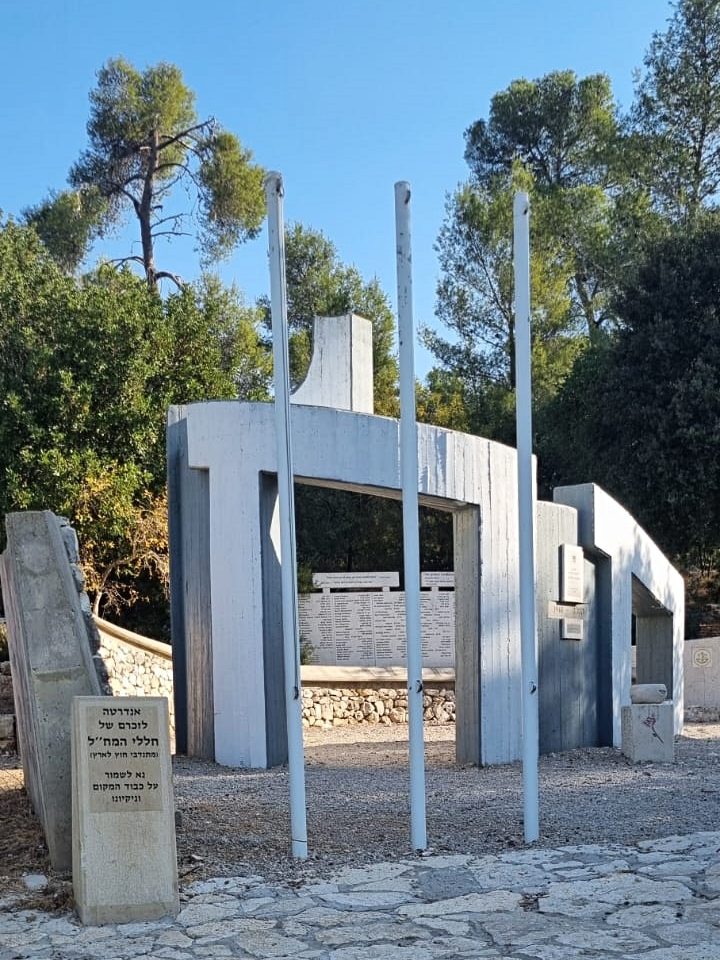
This memorial has particular significance to me. Not only because so many of the fallen were American citizens like myself. But also because a beloved relative named David Rebak (who was actually British), was a Mahal volunteer. After serving in the Haganah during Israel’s War of Independence, David lived a long and rich life, first in the young State of Israel, then in London. In his retirement years he and wife, who was my cousin Maurine, spent long months in Israel, where I came to know and adore them both.
David’s personal story, and hundreds of others’ stories, are preserved on the World Mahal website.
It’s an amazing tale of his brilliance and achievements as an artillery commander in Israel’s young rag-tag army. Well worth the read (in English).
Convoy Ridge
The hiking began by climbing the jeep trail up Reches Shayarot (Convoy Ridge).
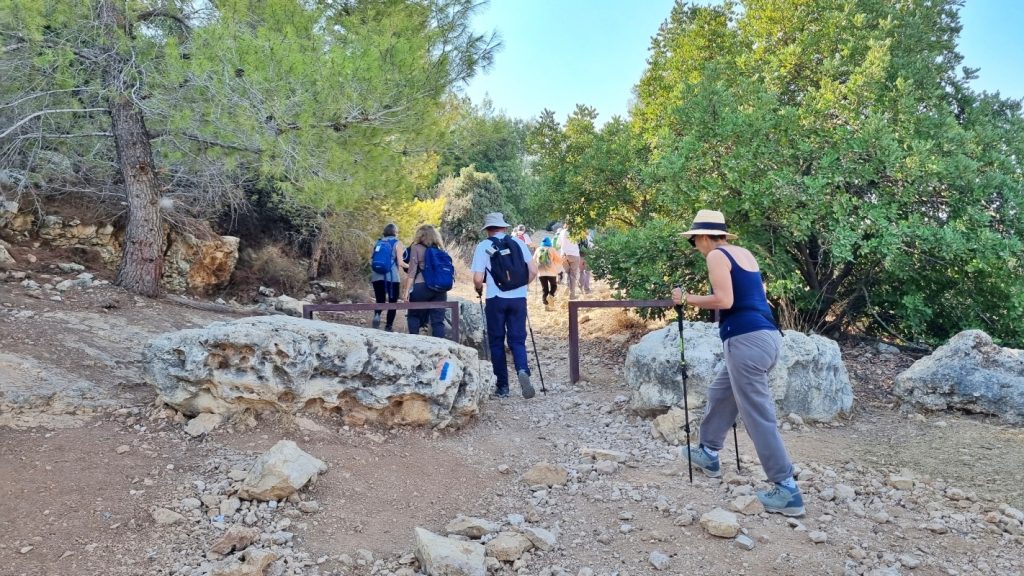
The trail is now blocked to vehicles, much to the chagrin of jeep enthusiasts. This trail segment has always been considered one of the ultimate tests of 4×4 driving skills, either ascending or descending across the slickrock and bolders.
Imagine trying to reach a besieged Jerusalem to deliver supplies on this road, while fending off hostile attacks.
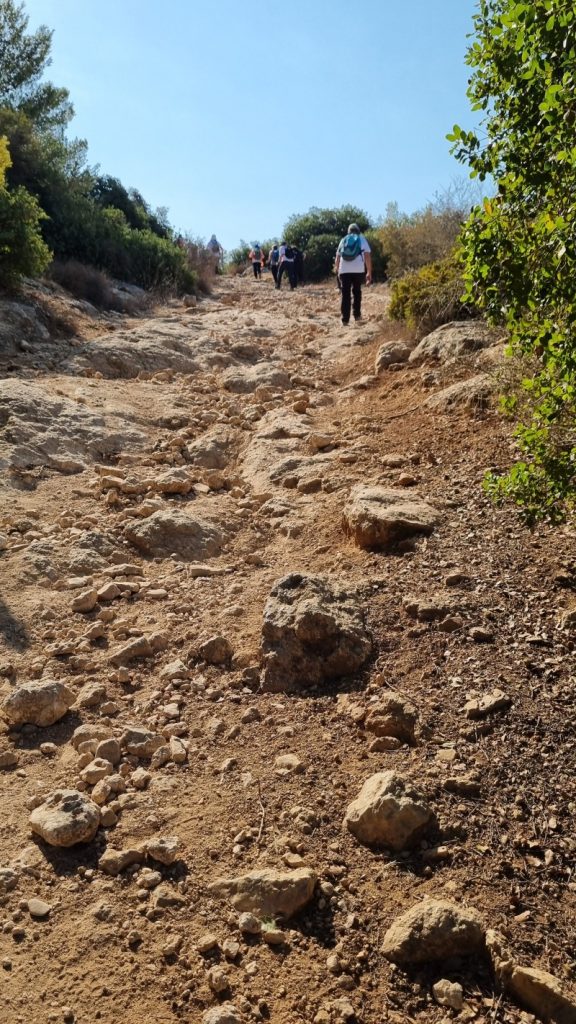
The trail offered sweeping vistas throughout the day.
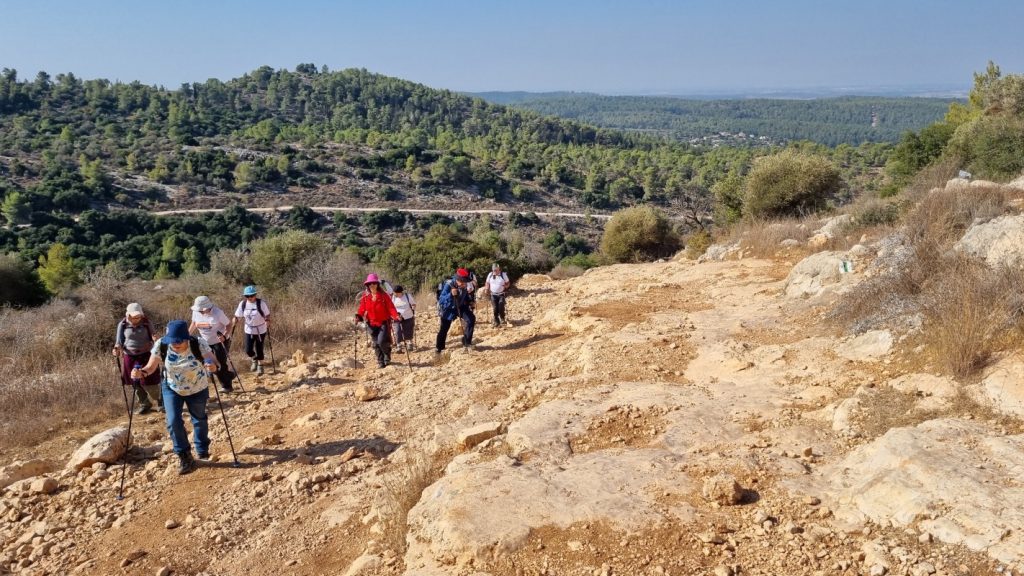
Along the hike we stopped at two of the 30 mishlatim (“strategic posts”) perched above the main Tel Aviv-Jerusalem Highway.
During the War of Independence, this passageway was a narrow road that served as Jerusalem’s lifeline. Surrounded by steep hills, this road was known by its Arabic name, Bab el-Wad (gateway to the wadi, or Sha’ar Hagai in Hebrew). Many valiant Jews were ambushed, fought and died while attempting to reach Jerusalem in convoys traveling on this road.
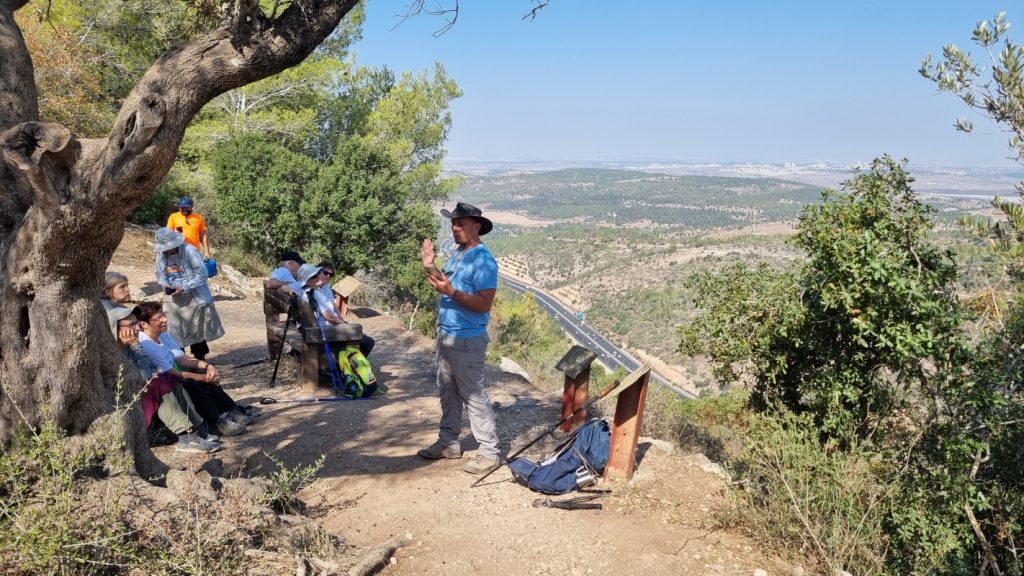
Moving along toward Mishlat 16, we stop briefly at a general vista point.
It is easy to see how the trail along this ridge, once secured by Jewish forces, played a strategic role in ensuring access to Jerusalem.
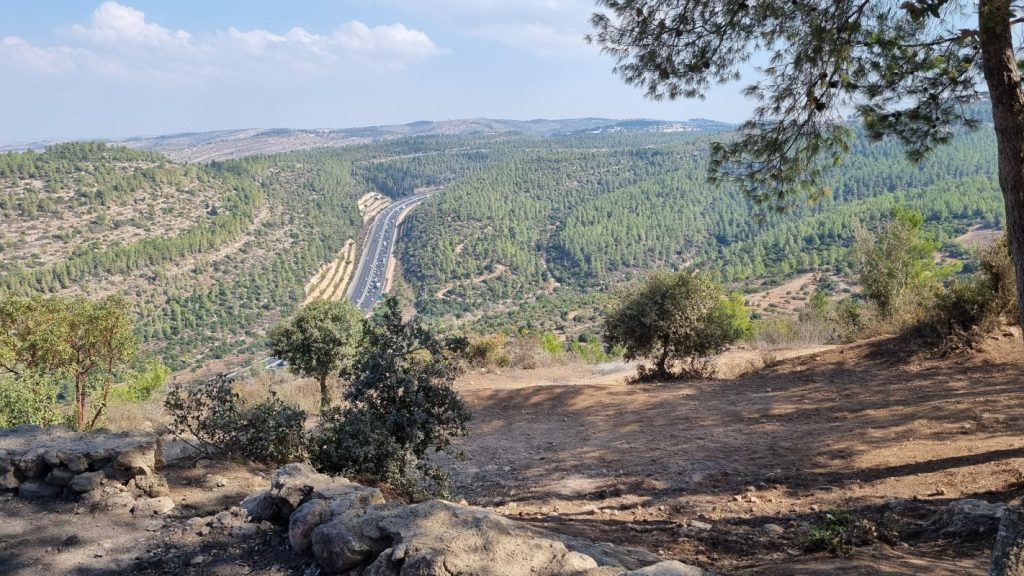
Martyrs Forest and Memorials
The Israel Trail crosses Route 3955 near the entrance to Moshav Beit Meir. It then descends steeply and swiftly into the pine forest in a series of rocky switchbacks.
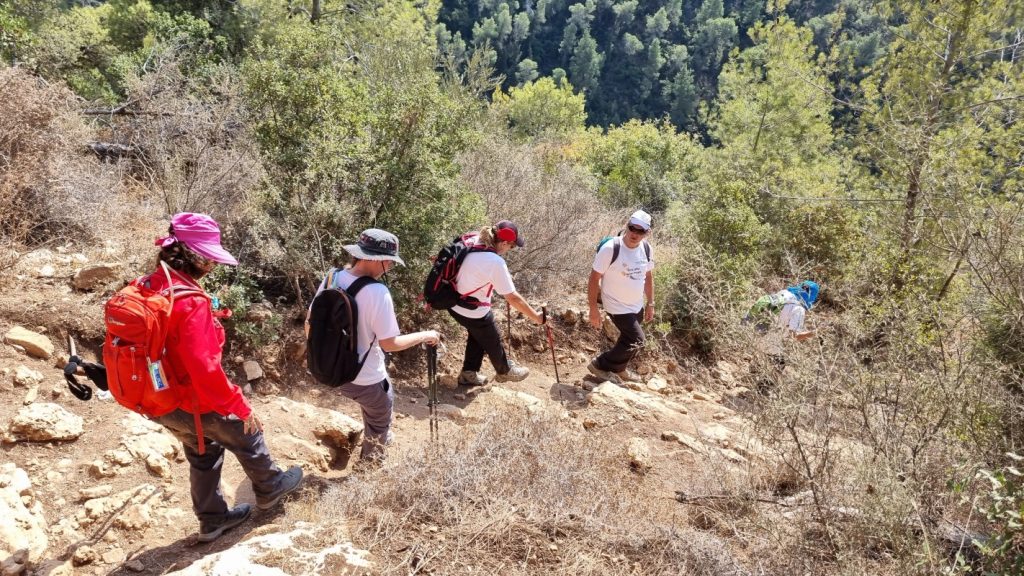
At the bottom is the Kislon streambed, and the B’nei Brit Cave. The cave — unfortunately closed to visitors — was prepared by B’nai B’rith and the KKL-JNF and serves as a place of solidarity with the memory of Holocaust victims at official ceremonies.
Anne Frank Memorial
A relatively new addition to the site, dedicated in 2011, is the Anne Frank Memorial. The large metal cube represents the annex in which the Frank family and others hid, and a depiction of a chestnut tree that was visible from the attic window. A small bench is placed in the corner. The path leading to the memorial has a series of plaques, some withs citation from her diary.
One particular plaque struck the strongest chord. Part of it states:
“The best remedy for those who are afraid, lonely or unhappy is to go outside, somewhere where they can be quiet, alone with the heavens, nature and God. … And I firmly believe that nature brings solace in all troubles.” [Anne Frank, February 23, 1944].
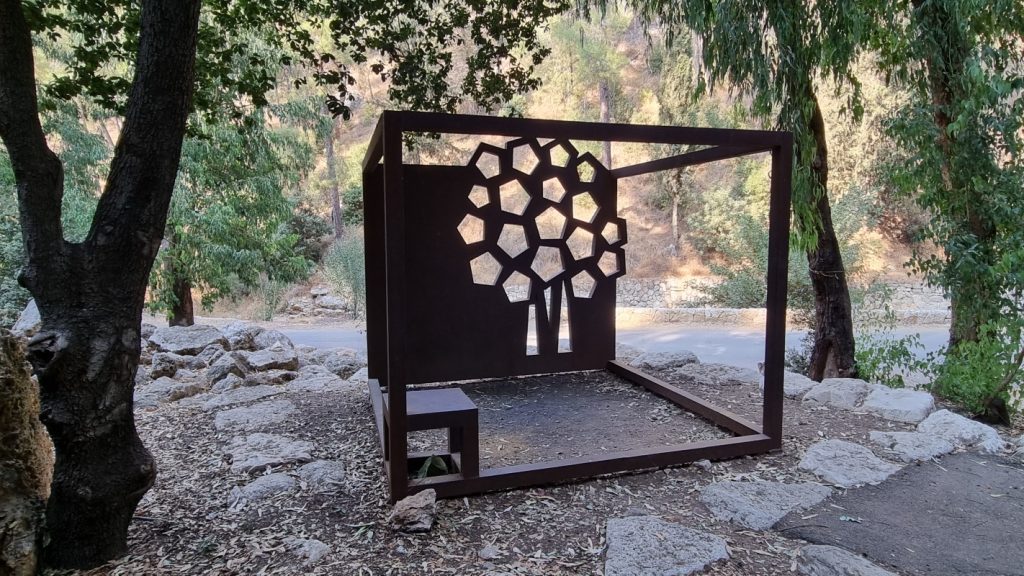
Yaar HaKedoshim (Martyrs Forest) provided the backdrop of our hike. Six million trees were planted in 1951 to create a forest commemorating the six million Jews who perished in the Holocaust.
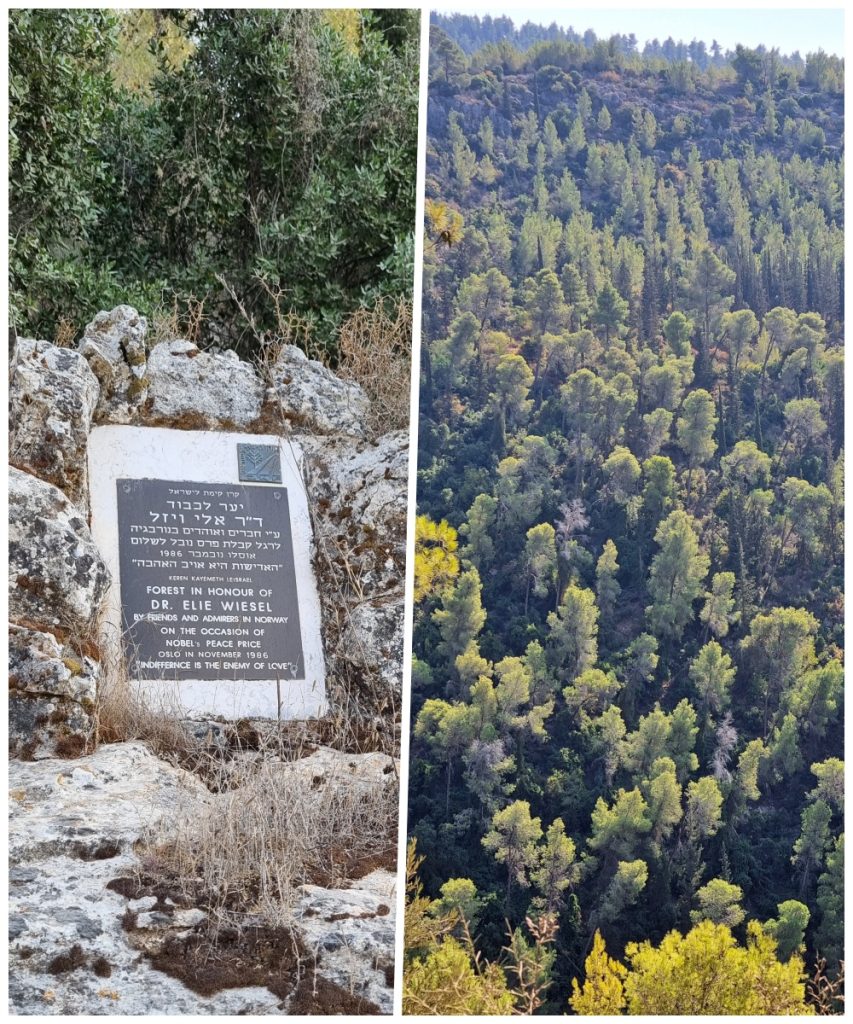
Final Climb
While the hike was technically not very difficult, it was more of a climb than a descent. Temperatures got warmer as the day progressed. The last stretch of climb required effort and determination. As the bus returned us our parked cars, I jokingly noted that it took us 6 hours to climb the trail, but only 6 minutes to get back to the start.
The complete set of my photos in a Flickr album: Israel Trail Hike 2024-10-31
Throwback
… to the blog I wrote about (most of) this trail segment 14 years ago, which we hiked in springtime, in the opposite direction: Shaar Hagai to Sho’evah (Shoresh) (2010),
and the set of photos I took on that hike. Again, I love seeing what has changed, and what remains the same.

